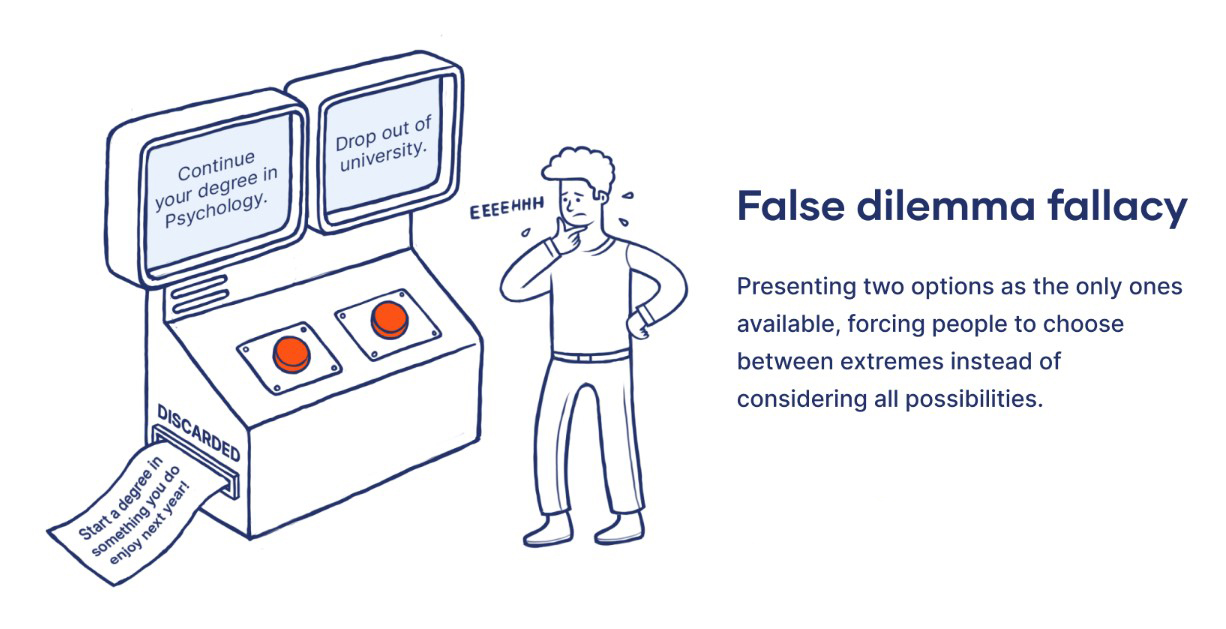A false dilemma, also known as a false dichotomy or black-and-white thinking, is a cognitive bias that occurs when someone presents a situation as if there are only two possible options, ignoring the existence of other viable alternatives. This bias can limit decision-making by oversimplifying complex issues.
Explanations:
A false dilemma can stem from the desire to make decision-making seem easier by reducing it to a binary choice. It may also be used to manipulate people’s decisions by framing options in a way that benefits the presenter.
Examples:
Politics: A politician may present a complex issue as a choice between two extreme solutions without acknowledging potential compromises or alternative approaches.
Relationships: In a dispute, one person might present their partner with a false dilemma, framing the issue as a choice between their way or the highway.
Consumer Choices: Advertisements might suggest that consumers have only two options—buying a product or being dissatisfied—ignoring other products and alternatives.
Solutions:
Critical Thinking: Encourage critical thinking and the exploration of multiple options when faced with a decision.
Avoid Simplification: Be aware of attempts to oversimplify complex issues and recognize when a false dilemma is presented.
Consider Compromises: Explore potential compromises and alternative solutions when faced with binary choices.
Question Framing: When presented with a false dilemma, ask questions that reveal the existence of other options.
Addressing the false dilemma bias involves recognizing the oversimplification of choices into binary options and actively promoting critical thinking, avoidance of simplification, consideration of compromises, and questioning framing to make more nuanced and informed decisions.
